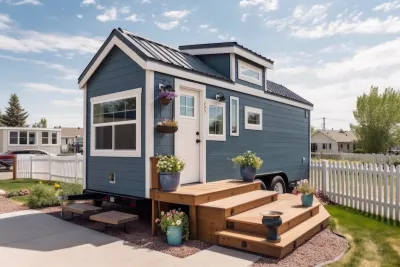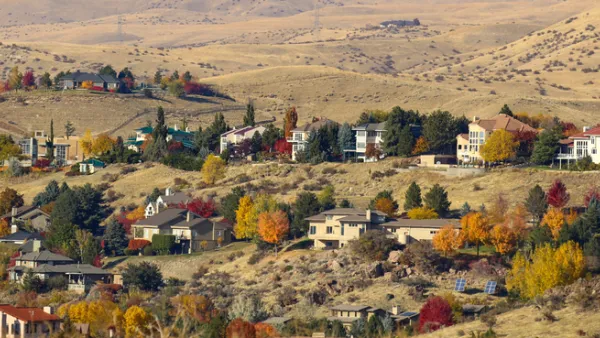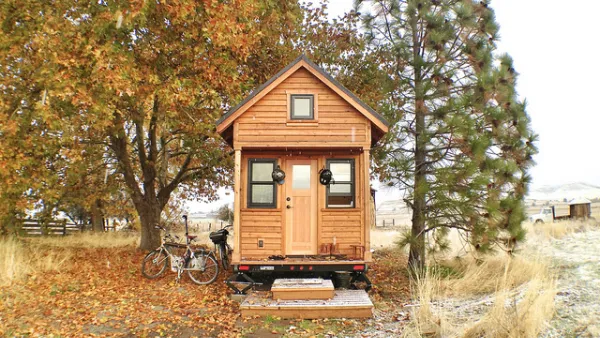Tiny homes were one of the hot button topics of the previous decade. In 2023? Not so much.

An article by Eve Andrews for Grist critiques the tiny homes movement—an idea that seems to have come and gone in the public consciousness, not to mention the newsfeeds of planning publications.
What once seemed like a revolution in housing and culture—born from a crisis of housing affordability and the ravages of the Great Recession—now seems like an “Instagram aesthetic,” according to Andrews.
But for all the hubbub, tiny houses never really entered the mainstream realm of homeownership. Instead, they entered the province of tourists seeking a brief decampment to a smaller-scale, climate-friendly lifestyle. You’re more likely to encounter one while scrolling through $300-a-night Airbnb listings than browsing Zillow.
Still, Andrews is unwilling to call the tiny homes movement a failure, rather it’s more of a victim of unrealistic expectations: “[T]he expectations placed upon it were too high: that it could take on all the sins of a bloated, profit-driven housing industry, and deliver us as a nation to a humbler, happier way of living,” writes Andrews.
The source article, linked below, includes a while history of the tiny homes movement, including the highs provided by the debut of a Netflix home improvement show in 2014, Tiny House Nation, to the lows of the Airbnb-ification of the movement.
Andrews also sees some reason for optimism that the ideas that birthed the tiny homes movement still have a chance at wider adoption, including in the resources tiny homes provide people experiencing homelessness and as a popular new typology of housing, the accessory dwelling unit.
FULL STORY: Did big expectations doom the tiny house movement?

National Parks Layoffs Will Cause Communities to Lose Billions
Thousands of essential park workers were laid off this week, just before the busy spring break season.

Retro-silient?: America’s First “Eco-burb,” The Woodlands Turns 50
A master-planned community north of Houston offers lessons on green infrastructure and resilient design, but falls short of its founder’s lofty affordability and walkability goals.

Delivering for America Plan Will Downgrade Mail Service in at Least 49.5 Percent of Zip Codes
Republican and Democrat lawmakers criticize the plan for its disproportionate negative impact on rural communities.

Test News Post 1
This is a summary

Test News Headline 46
Test for the image on the front page.

Balancing Bombs and Butterflies: How the National Guard Protects a Rare Species
The National Guard at Fort Indiantown Gap uses GIS technology and land management strategies to balance military training with conservation efforts, ensuring the survival of the rare eastern regal fritillary butterfly.
Urban Design for Planners 1: Software Tools
This six-course series explores essential urban design concepts using open source software and equips planners with the tools they need to participate fully in the urban design process.
Planning for Universal Design
Learn the tools for implementing Universal Design in planning regulations.
EMC Planning Group, Inc.
Planetizen
Planetizen
Mpact (formerly Rail~Volution)
Great Falls Development Authority, Inc.
HUDs Office of Policy Development and Research
NYU Wagner Graduate School of Public Service




























